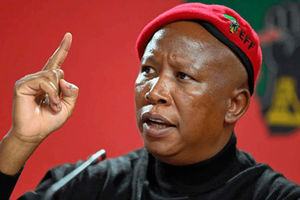Azam FC to build modern stadium

Azam FC Chief Executive Officer Abdul Mohamed speaks at a past event. PHOTO | FILE
What you need to know:
- This was said by Azam FC Chief Executive Officer Abdul Mohamed in a special interview with The Citizen.
- Currently, the team owns Azam Complex Ground, which has the capacity to accommodate 7,000 people. Abdul said the new stadium would accommodate between 30,000 and 40,000 people and would be situated at Kinondoni Municipal Council.
Dar es Salaam. Azam Football Club plans to construct a second stadium that will be used for both local and international competitions.
This was said by Azam FC Chief Executive Officer Abdul Mohamed in a special interview with The Citizen.
Currently, the team owns Azam Complex Ground, which has the capacity to accommodate 7,000 people. Abdul said the new stadium would accommodate between 30,000 and 40,000 people and would be situated at Kinondoni Municipal Council.
He said their target was to ensure the club attained the highest standard in the development of football not only in Tanzania, but also on the entire African continent.
According to Mohamed, the current Azam Complex will be used for team training only and the main stadium will be for all matches.
“The stadium will be in Kinondoni Municipal Council. We will give you details once we start the project. Our plan is to construct a new stadium. We have planed to rename the current Azam Complex as NMB Stadium. We want to sell the name right to the bank, which is our main sponsor. We are in good terms with our sponsors and we have established monthly awards known as NMB Player of the month,” said Abdul, who said they had also established a team magazine, which would be distributed free of charge during matches at Azam Complex.
He said the team was also enjoying sponsorship from Azam Cola, Uhai drinking water, Azam TV and Trade Agents owned by Said Salim Bakhresa and Company Limited, which poured money into the team.
Modern facilities
Apart from planning to construct the second stadium, Abdul said the club had also completed a modern media centre, which allowed various sports journalists and football stakeholders in general to do their job.
He noted that the media centre only existed at their venue with all requirements.
“All journalists will access free Internet. This will help them finish their tasks, while they are at the venue. We have also honoured our members and fans to get club materials through their shops,” he said.
Abdul is also journalist. “I know challenges facing all journalists at the National Stadium, Uhuru, and other football stadiums. I want all of them to be comfortable, while at Azam Complex Stadium,” he said.
He noted that they had built another shop for selling football kits at affordable prices. He said a team jersey was sold at Sh11,000. Another shop is in Kariakoo.
Minimisation of team expenses
Abdul said Azam FC was among the teams, which spent a lot of money on its daily operations apart from transfer fees and salaries.
It was estimated that the team used Sh500 million per month operations. Apart from that, the team used a lot of money to recruit players and pay salaries. The club’s financial stability attracts many players to join the team.
Despite solving players’ problems, the club did not meet its target in the league and finished second several times. The move made the team owner have a headache to reduce expenses, while keeping it at the top of the Tanzanian football.
“I was given the task to ensure we reduce the cost and build a strong squad. It was a challenging task as some of the players did not accept new strategies and opted to join other teams, John Bocco, Aishi Manula, Gadiel Michael, Shomari Kapombe and Erasto Nyoni decided to leave the club and join big guns.”
“You know, when I was joining the team, there were big changes in the country’s economy. Many businesses were never operating properly and even our sponsors NMB reduced the amount of money they were giving us,” “Other sources of fund declined, so I had to look at ways of reducing expenditure, while making the club strong in the league. I appreciate the Azam FC board to endorse my strategies and bring about smooth operations in the team, ” he said.
He noted that he and his fellow leaders managed to keep things going by reducing the team expenditure for 48 per cent of monthly salaries.
“Foreign players were paid up to $6,000 to $7,000. We now pay them $3,000, which we can at least afford,” he said. He explained that they were still working on it to get average expenditure of the club.
Players’ registration
Abdul said before starting recruiting players, they were scouting together with club technical bench officials.
Junior Waziri, Salmini Hoza and others were among the targeted players for this season.
“Negotiations with these players started very early. So, when the transfer window opened, we were already in good state in terms of agreements and only one thing remaining was to complete the deal as per rules and regulations. Mbaraka Yusuph was endorsed even before the end of the last season,” he said.
He explained that they also planned to recruit other players to strengthen the team, but it was just alternatives if they failed to recruit the targeted one.
“We are happy to reach our target and the team is doing well. Some people predicted that the departure of key players was the decline of the club, but it was not. We are now among the top teams and conceded only one goal,” he said.
Youth teams
Abdul said they were proud of having a strong youth foundation, which generated players in the various clubs in Tanzania Mainland.
He said so far many players had joined or played on loan in various clubs in a special programme that aimed giving them exposure and experience in Tanzania Mainland Premier League.
“We are very keen on the youth football foundation. All players signing contracts. We have U-13, who train and go back home. We have U-15, who featured in the league recently, U-17 and U-20, are now in plan to stage a youth league in collaboration with Jakaya Mrisho Kikwete Youth Park. We want to see them attain exposure and experience,” he said.
He said the team focus was to generate many players in both U-17 and U-20 national teams that why they had been investing in youth development. We also focus on U-23 teams as well as senior national soccer team (Taifa Stars).
“It is honour for players to play for their national teams. We are very proud of seeing some of the youth players (U-17), who are now members of Serengeti Boys. We have not less than seven players.”
“Even the team is honoured for contributing many players to the national team. We have attained that and our target is to see many players play for their nation,” he said.
Leadership challenges
Football requires full-time commitments and a high level of tolerance. “You cannot get time to rest if you want to run your club professionally. Many people talk about Azam FC development since its establishment in 2005. They know what they have attained so far and challenges.”
“It is not an easy task to reach this development. We have more than 150 employees here and all have to be treated fairly to perform their duties well,” he said.
He explained that, when he was going for marriage, he used morning hours to settle Azam FC matters.




